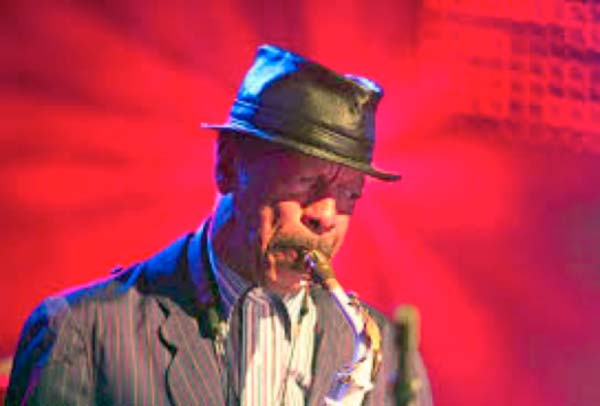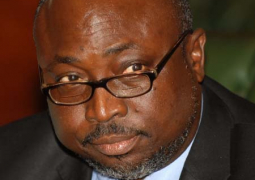
Jazz
music grew and developed in a process of gradual change with many twists and
turns, and it will be impossible to comprehend the emergence of the Free Jazz
Movement without understanding how it fed on a powerful cultural shift in
American society during that period.
During
the late 50’s and early 60’s, the word “Freedom” stood out as a politically
charged word in American public discourse and it would be difficult to find a
term that was more explosive and laden with varieties of meaning being
proclaimed with more emotion during those tumultuous years. “Freedom” was very
much something to live for, or, for a few, even to die for.
There
were the “Freedom Riders”, the “Freedom Singers”, and there was the “Freedom
Vote”. The word was imprinted on the public’s consciousness and dramatized in
speeches by Dr. Martin Luther King. It was sang in hymns and brandished at all
battlegrounds of the civil rights movement.
The
influence of this Freedom Movement on Free Jazz was therefore very visible and
expressive. However, the sociopolitical ramifications of this music are in many
ways decisive in distinguishing the new free jazz players from the older
generation of experimental jazz performers. From a purely musical point,
freedom i. e. atonality in jazz music had appeared many years before Ornette
Coleman and Cecil Taylor raised it into a decisive issue. But all of these
precursors of free jazz were white musicians and representatives of the status
quo.
In contrast, the proponents of free jazz who
came into prominence at the close of the 50’s were almost all outsiders: as
African Americans they were outsiders from mainstream society and as musical
renegades they were outsiders from mainstream jazz. Many of them lacked access
to concert halls, grants, commissions and other symbolic measures of artistic
achievement.
During
his formative years in Los Angeles, free jazz pioneer Ornette Coleman worked as
an elevator operator in a department store and pianist Cecil Taylor labored as
a dishwasher in a restaurant.
In
his early teens, Coleman acquired an alto saxophone, but struggled to learn the
rudiments of the horn.
He
however, persevered and continued to develop and grow as a musician defying all
the odds while sticking to his style of improvisation. In addition to being
known as a saxophone player, Coleman was also an accomplished violinist,
trumpeter and composer. He is one of the major innovators of the free jazz
movement of the 1960’s and is closely associated to avant-garde jazz and jazz
rock.
His
birth name is Randolph Denard OrnetteColeman. He was born in Fort Worth, Texas,
USA on March 9th 1930. He attended I.M.Terrell High School in Fort Worth and
was a member of the school band until he was dismissed from the band for too
much improvisation.
While
in school, he began performing R&B and bebop initially playing the tenor
saxophone and started his own band called Jam Jivers with fellow students. He
later switched to alto sax which has remained his primary instrument to
date.
Coleman’s
approach to harmony and chord progression was much less rigid than that of the
bebop performers, and he was very much interested in playing what he heard
rather than fitting into predetermined chorus structures and harmonies. He was
known for playing “in the cracks” of a scale which led many musicians in Los
Angeles to regard his playing as being out-of-tune. Nonetheless, pianist Paul
Bley was an early supporter and musical collaborator.
In
1958, Coleman led his first recording session for Contemporary Records with the
release of “Something Else”… the music of Ornette Coleman- featuring Don Cherry
on trumpet, Billy Higgins on drums, Don Payne on bass and Walter Norris on
piano.
In
1959, he made his last release on Contemporary entitled- “Tomorrow is the
Question! - a quartet album which featured Shelly Manne on drums and excluded
the use of piano which he would not use in his music until the 90’s.
Later
in 1959, he brought a group of musicians together including Charlie Haden on
bass with Cherry and Higgins playing their usual roles and signed a multi-album
contract with Atlantic Records.
The
album “The Shape of Jazz to come” was released the same year and was referred
to as a ”watershed event in the genesis of avant-garde Jazz”.
Some
musicians saw Coleman as an iconoclast, but others including conductor Leonard
Bernstein and composer Virgil Thomson regarded him as a genius and an
innovator. His quartet received a lengthy engagement at New York’s famous Five
Spot club and support came from other quarters such as the Modern Jazz Quartet
and Lionel Hampton.
In
1960, Coleman recorded the album “Free Jazz”-A Collective Improvisation, which
featured a double quartet including Don Cherry and Freddie Hubbard on trumpet,
Eric Dolphy on bass clarinet, Haden and Scott LaFaro on bass, and both Higgins
and Ed Blackwell on drums.
Although
Coleman is notably one of the pioneers of free jazz, he did not entirely
approve of the term and in-fact later explained that the term “Free Jazz” was
used by him only as the title to an album and not meant to declare a new form
of jazz.
It
should be noted here that Coleman’s music contains a considerable amount of
composition and his melodic material strongly recalls the melodies that Charlie
Parker wrote over standard harmonies.
He
very rarely played standards, concentrating on his own composition of which
there seemed to be an endless flow.
Between
1965 and 1967, Coleman signed with Blue Note Records and released a number of
recordings starting with the recording of “At the Golden Circle Stockholm”. In
1966, he recorded “The Empty Foxhole”, a trio with Haden, and Coleman’s son
Denardo Coleman- who was only ten at the time. Coleman was criticized for this
initiative and some thought that he did it as a publicity stunt.
Others
however, noted that the young Coleman, despite his youth, had studied drumming
for several years and needed the experience for his development. Denardo has
since matured into a respectable musician and has been his father’s primary
drummer since the late 1970’s.
Ornette
was also interested in string textures and in 1962 he released the album “Town
Hall”, and in 1972 he came out with “Skies of America”, each of these releases
being string arrangements.
In
later years, Coleman like Miles Davis before him took to playing with
electrified instruments. Albums like “Virgin Beauty” and “Of Human Feelings”
used rock and funk rhythms, sometimes referred to as free funk. These
performances have the same angular melodies and simultaneous group
improvisations, something Joe Zawinul referred to as “nobody solos, everybody
solos”.
In
1988, Coleman released the album “Virgin Beauty” with Jerry Garcia playing
guitar on three tracks. In 1993, he joined the rock band “Grateful Dead” on
stage playing the band’s songs, and earlier in 1985, he joined Pat Metheny and
recorded “Song X”.
This
album was released under Metheny’s name but Coleman was essentially the leader
of this project, contributing all the compositions in the album. Coleman’s
notoriety was also felt beyond the borders of the U.S. In 1990, the city of
Reggio Emilia in Italy held a three-day “Portrait of the Artist” featuring a
Coleman quartet with Cherry, Haden and Higgins.
The
festival also presented performances of Coleman’s chamber music and the
symphonic “Skies of America”. The 1990’s saw a lot of work from Coleman, and in
1996, he again started working with piano players on his recordings.
The
period of 2000s, witnessed Coleman receiving numerous awards and honors. In
2004, he was awarded The Dorothy and Lillian Gish Prize, one of the richest
prizes in the arts.
In
2006, he released a live album titled “Sound Grammar” with his newest quartet,
his son Denardo playing drums and two bassists, Gregory Cohen and Tony Falanga.
This
album won a Pulitzer Prize for music in 2007.In that same year; he was honored
with a Grammy award for lifetime achievement in recognition of his legacy. In
2009, he received the Miles Davis Award and in 2010, he was awarded an honorary
degree in music from the University of Michigan.
Coleman
continues to playmusic that pushes him into unusual situations, often with
younger musicians or musicians from radically different musical cultures and
still performs regularly.
Listen
to jazz music and set your mind free. The great Ho Chi Ming of Vietnam once
said that “there is nothing more sacred than FREEDOM and INDEPENDENCE”. The
free jazz movement was a manifestation of this spirit and understanding.
This
article is dedicated to these words in our national anthem: “For the Gambia our
homeland, we strive and work and pray that all may live in Unity, Freedom and
Peace each day” God Save the Gambia.


